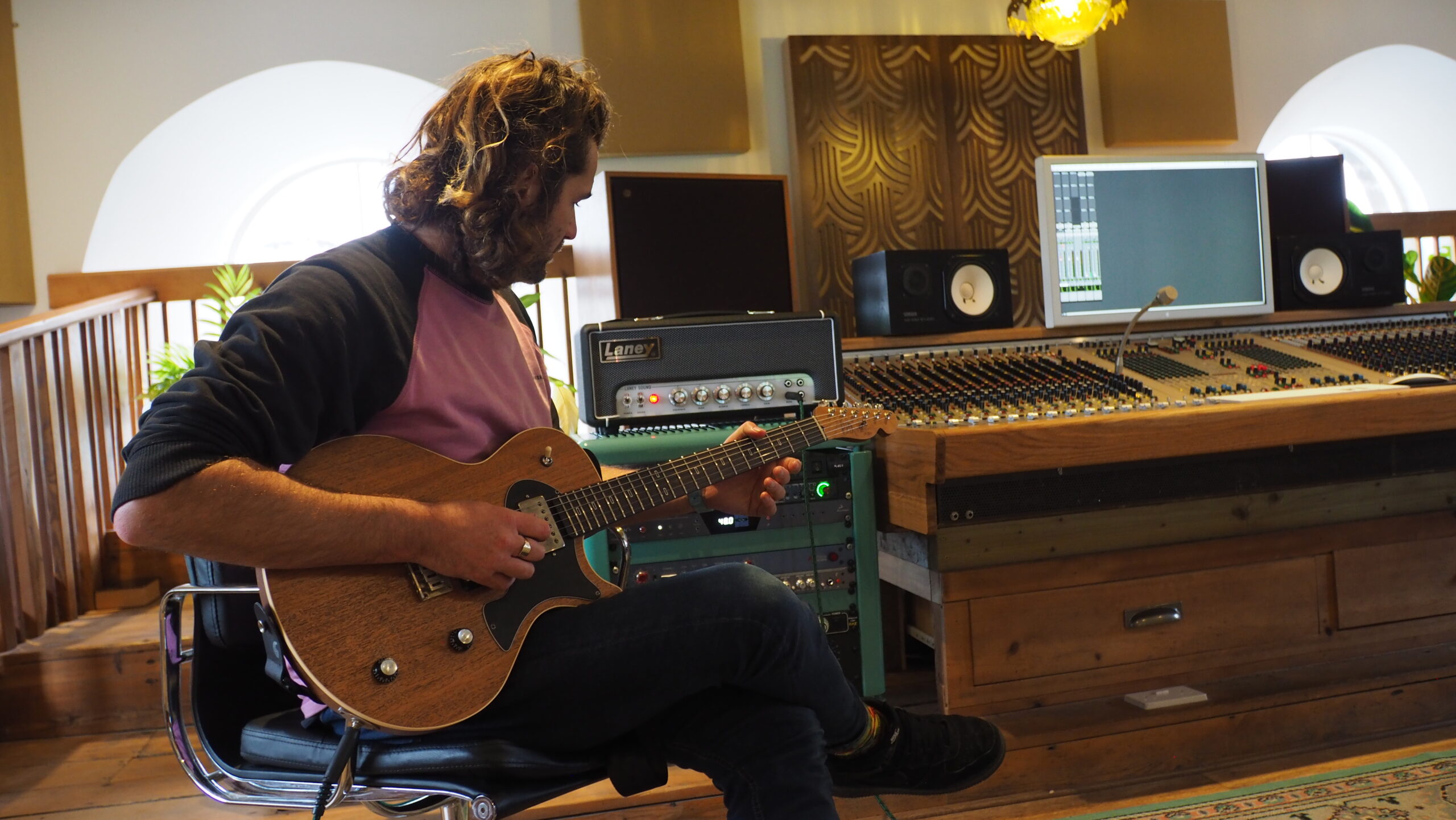Real world use with Owain Jenkins, Gethin Pearson and Dan Messore at Studiowz in West Wales.
The Laney LA-Studio is the perfect tool for recording at home, that is a given, but what about using it in other environments and in other ways? Can it be used as a ‘normal’ amp? We went to Studiowz in West Wales to put it to the test…
In the gorgeous scenic countryside of Pembrokshire in West Wales is a converted chapel and now a studio called ‘Studiowz’. Owned by record producer Owain Jenkins, the place is incredible, the perfect setting to record music. We thought it would be the perfect location to get record producer, mixer and songwriter Gethin Pearson along to give the Laney LA-Studio a thorough test within the studio setting, an LA-Studio in the studio if you will.
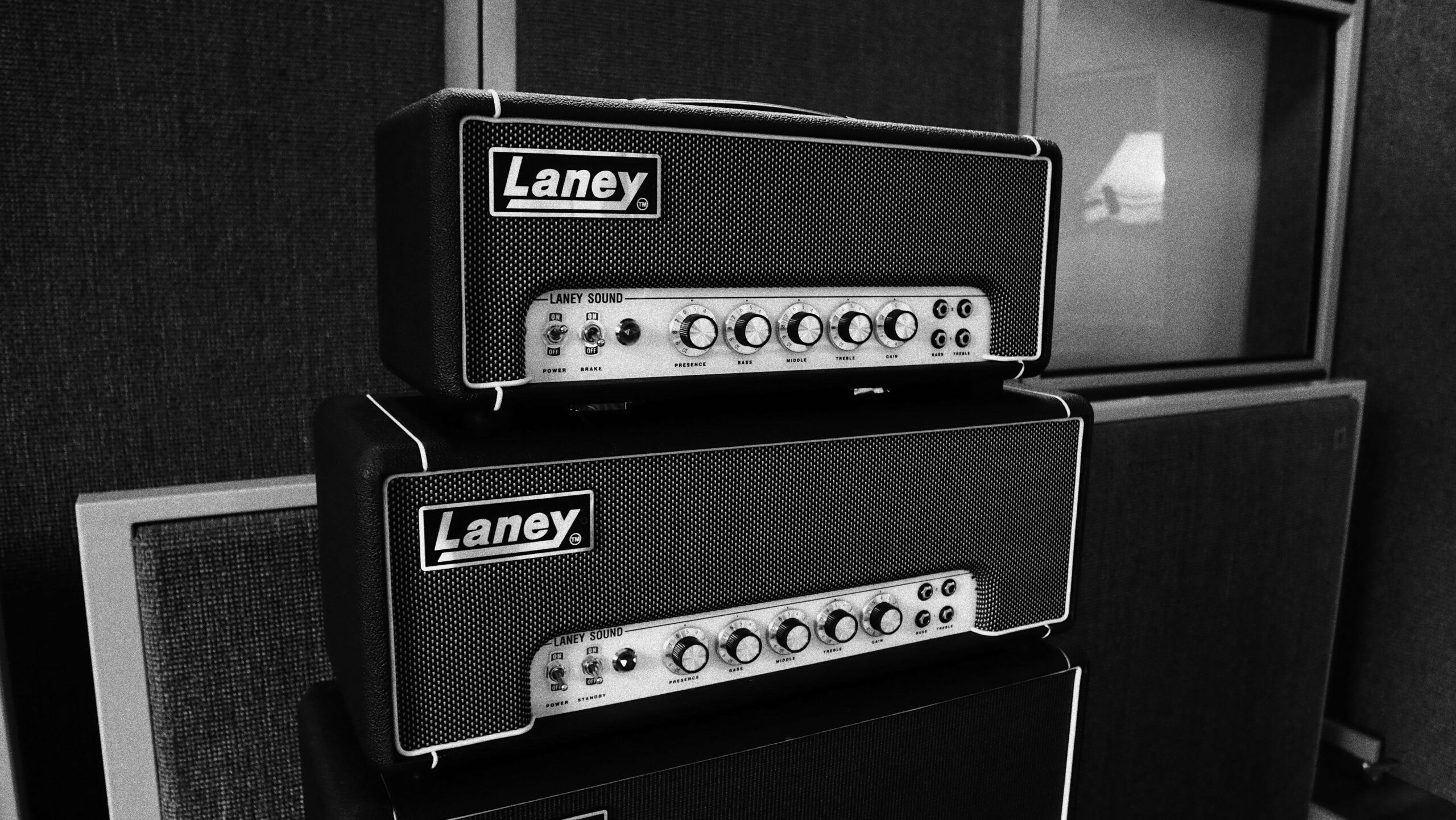
The LA-Studio is of course a part of the Laney Supergroup range of amplifiers, however unlike it’s bigger brothers, it has Two Notes technology built into the back panel, this means that it can offer a perfect solution to the ever grinding issue that is placing a microphone in front of a cabinet in order to get the true sound of an amplifier through a cabinet. Talking of the other supergroup amplifiers, Owain Jenkins is the proud owner of an all original LA100BL and after a look inside, it seems like his LA100BL is a mid 1969 model, and a model in extremely good condition, possibly the best we have ever seen! Owain tells the story that he purchased it from a chap who bought it from new and took extreme care of it, and the proof is the amp itself, it is immaculate.
Alongside the original LA100BL, there is also it’s newer 30 watt counterpart, the LA30BL, recently built at the Laney factory in The Black Country at Black Country Customs. So we have a really good array of amplifiers as a ‘test-bed’ to trial the LA-Studio.
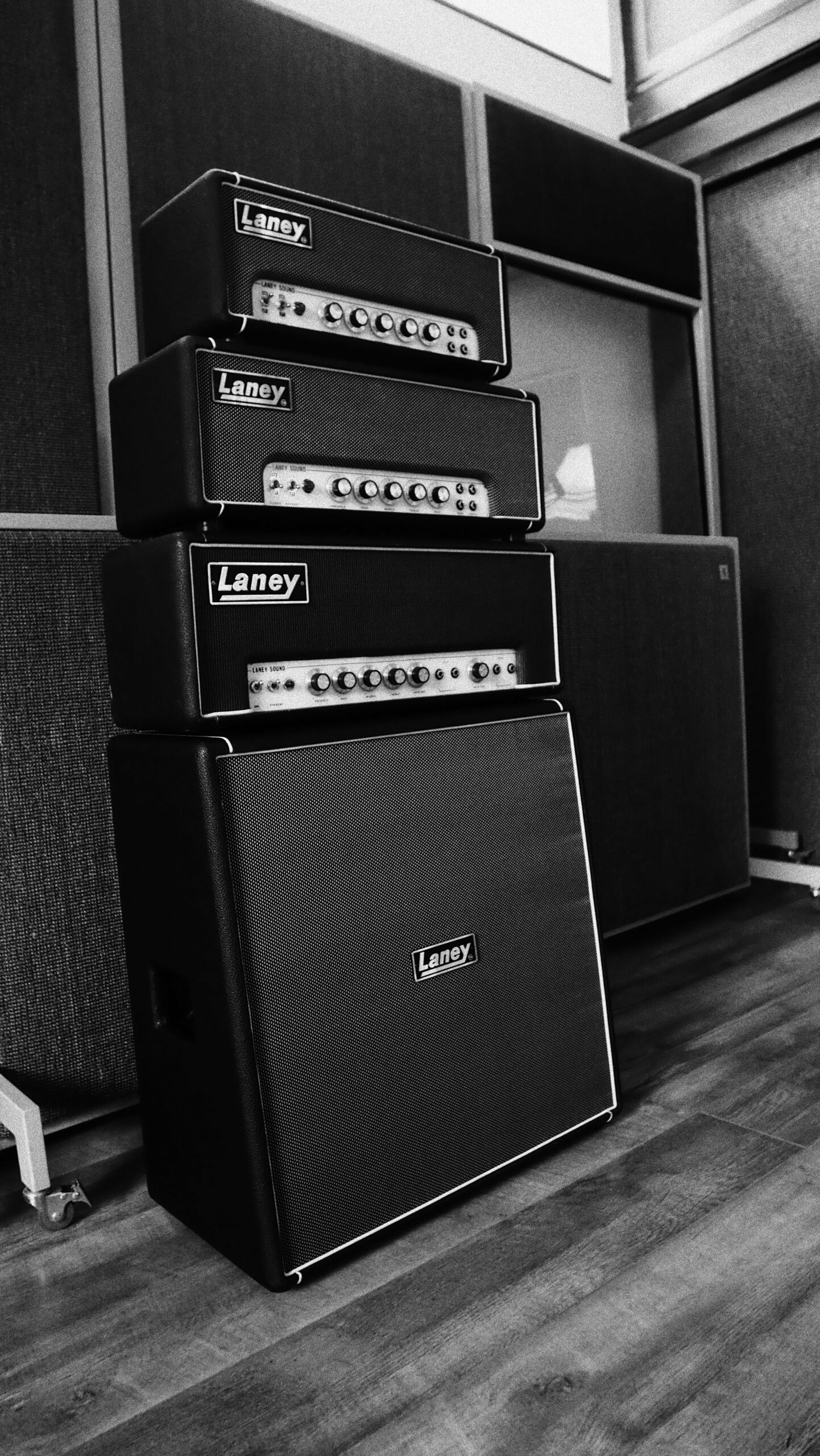
To start we decided to compare the LA-Studio with the others as a direct amplifier. So we plugged guitarist Dan Messore in the front and turned it up. Naturally, there is only 3 watts of power from the LA-Studio, but it gives an almighty punch, when switching between the LA30BL and the LA100BL, the bloodline of the supergroup amplifiers is plain and clear to hear. It’s the ‘Laney Sound’ as is printed on the front panel of all three amplifiers, the sound that changed and defined heavy metal via a certain Mr. Iommi back in the late 1960’s.
Something special happens when these amplifiers are turned up past the ‘5’ mark on the gain knob, it’s a feeling, a sound and most certainly an experience that is one of the wonders of the amplification world. An almost sub-like sound happens, a moment that really takes you by surprise when hearing it in person. Immediately you can hear the unique characteristic that the Supergroup range of amplifiers provides, thick low end but clarity in the mids and tops that is thoroughly user friendly. Throw a boost pedal on the front end and you have the sound. In our case we used a Laney Black Country Customs Steelpark Boost Pedal, the pedal derived from the Tony Iommi TI-Boost signature pedal.
Hearing the LA-Studio being pushed through the Laney LA212 cabinet (loaded with Celestion G12M drivers) saw all present react in the same way: lots of smiles, lots of nodding of the head, the true sign that a music lover is enjoying themselves!
The 3 watt LA-Studio was perfect, both in volume being withstanding and in continued playing being reacted to as it was pushed. So, it’s a great amp through a cabinet, but that is something we have mastered for 55 years, so no great surprises there, more clarity that the true essence of the character of the amplifier is true to it’s origins when compared to the 30 watts of the LA30BL and the 100 watts of the LA100BL, but what about the unique point of the LA-Studio? That special back panel with the Two Notes technology on the back?
Now it was time to get the amp upstairs in the chapel and into the control room to see if the reaction and feel felt the same to Dan Messore as it did in the live room at full volume.
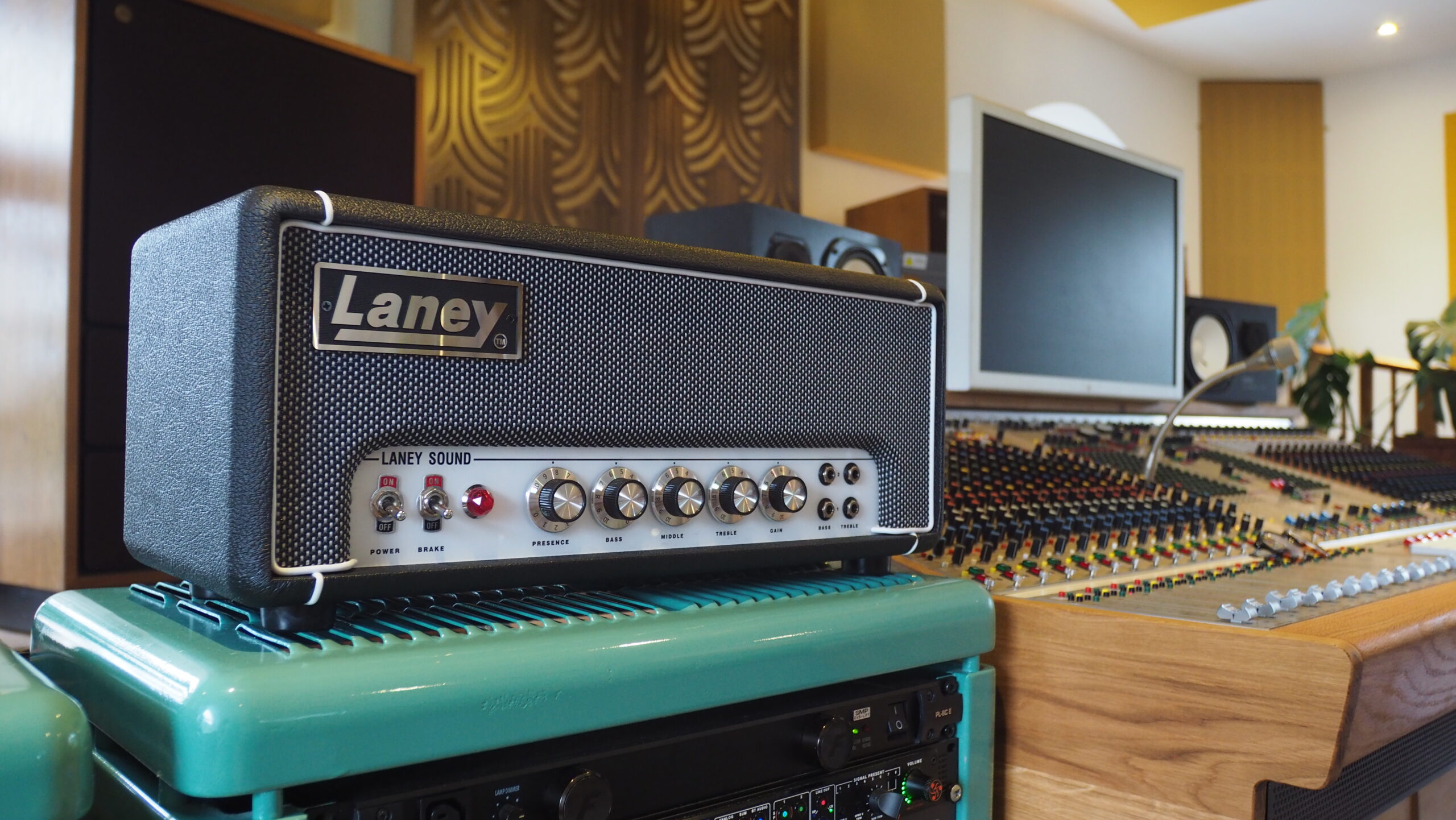
Plugging in, there is a unique feeling of looking at what appears to be a vintage amplifier, but not needing to load the speaker output into a cabinet, a unique but a very satisfying feeling as there is no doubt that this little head carries more than just a punch and beautiful aesthetic, but the secret feature of the Two Notes technology.
Straight into the desk via the XLR output, we now have the option of what cabinet we would like to have the head emulate via the clever ‘Dyn-IR’ feature the Two Notes technology provides. In the case of the standard factory settings, you have six options, these are:
We started with Option 2, this was the most representative of the sound we had in the live room with the actual LA212. Immediately Dan mentioned how the response was the same, the feeling of the guitar felt the same as it did plugged into the cabinet, the reason for this is that nothing between the guitar and the output of the back panel on the LA-Studio has changed, so the guitar is still reacting to the valves in the same way, so the valve amp is acting as it should; a valve amp. Turning the studio monitors up you got a near identical sound, this is the practicality of the LA-Studio shining through in all its glory. The feeling of a room with a cabinet and amp turned up loud, but the reliability of the microphone placement in perfect position due to the Dyn-IR cabinet options from Two Notes.
The other options also give access to sounds that might be out of reach in the real world to the real-world user. Option 3 for example, one of the rarest Laney cabinets, the LA412, in a bright medium sized venue, perfectly mic’d up, allowing the Celestion G12H 70th Anniversary Edition drivers to really sing. This gives the end user options that are out of reach to most, unless of course you have a medium sized venue, an LA412, a studio enginer, a producer, a desk and a lot of time to hand, which most of us do not. Step forth the LA-Studio, all these problems are now mere problems of the past, but with the tone and sound of the past that we all love and desire to achieve when recording.
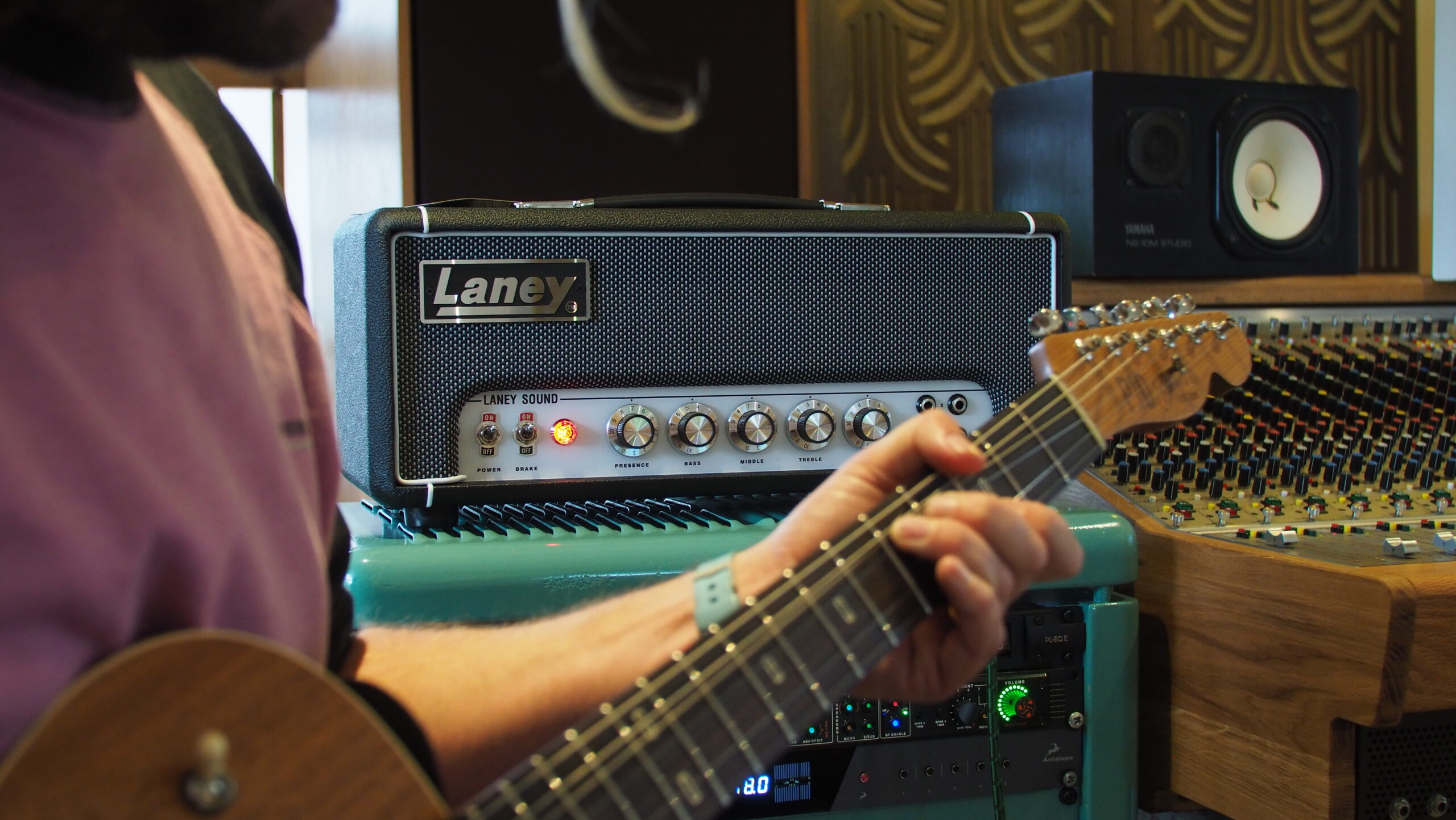
Looking at the six options that come as standard on the LA-Studio, naturally, some may think there isn’t something within these that speaks to them, completely understandable as everyone strives to achieve a sound that sits well with their ear and their taste, this isn’t a problem for the LA-Studio as you have a USB option to plug the amplifier into your computer and when using the Two Notes app or website, you can reassign the six presets to anything you like. This really opens a plethora of options to the user as you have thousands of options from the Two Notes library, including a library of Laney cabinets and an endless selection of rooms, environments, effects and microphones to choose from.
Say for example you wanted to have the original Tony Iommi LA412 form 1969 with a dynamic microphone placed 30cm from the speaker in a room similar to an iconic room like Studio 2 at Abbey Road (The Beatles room), then you can select this option, play around with the microphone positioning (on/off axis and distance/angle) within the Two Notes app or website and allocate one of the presets on the back panel of the LA-Studio to our new sound and setting.
The options are endless and the possibilities are limitless, this really is the technology of tomorrow, today. Valve amplification technology is a near 100-year old piece of tech, and with this option, you get to continue to enjoy the unique sound a valve amplifier produces, with the application and practicality needed for the 21stcentury. We all know the digital solutions that are out there, but nothing quite hits the nail when it comes to that feeling you get when standing in front of a real valve amplifier, but now, with the LA-Studio, you do!
